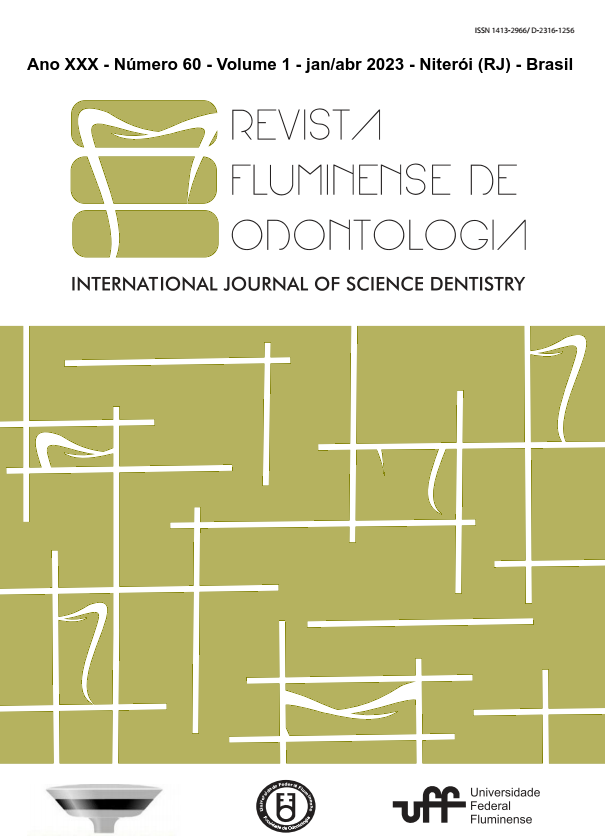EVALUATION OF THE OCCLUSAL CONTACT AREA OF MOLAR DENTAL IMPLANTS COMPARING TWO DIFFERENT THICKNESSES (16 µm AND 200 µm) OF ARTICULATING OCCLUSAL PAPERS AND FORCES (200 AND 250 N): A PIVOT IN VITRO STUDY
DOI:
https://doi.org/10.22409/ijosd.v1i60.56256Resumo
Introduction: The goal of this pilot study was to evaluate the differences between checking occlusion on implants crowns using 16 or 200 µm thickness of articulating occlusal paper, and to compare the stained occlusal area between the groups after bite forces of 200 and 250 N. Methods: It was included 10 casts of articulated-type IV gypsum, 10 NiCr crowns, articulating occlusal papers (16 µm and 200 µm thick), and a compression test machine. Compressive forces (200 and 250 N.mm) were applied on models, to check the occlusal contact area of fixed and cemented crowns. The contact areas on the crowns were measured through images obtained by the scanning electron microscope. Statistical tests were performed considering the significant level of 5% (p≤0.05). Results: The stains found using 200 µm of articulating paper were higher than those with 16 µm, independent of the force applied. However, the stains obtained in lower teeth with different strengths (200 and 250N) marked with 16 µm articulating paper were not possible to score. The articulating paper variable had significant statistical results (p=0.002), while the variables force (p=0.443) and articulating paper-force interaction (p=0.607) were not significant. The mean area found in staining using the 200 µm and 16 µm papers was, respectively, 8.3380 mm2 and 3.4759 mm2. Conclusion: It was possible to confirm that 200 µm of articulating occlusal paper showed better and significant results to stain the occlusal area, permitting a more accurate adjustment independent of the force applied.
Keywords: Occlusion, Dental implant, Compressive forces, Occlusal paper, Contact area.


